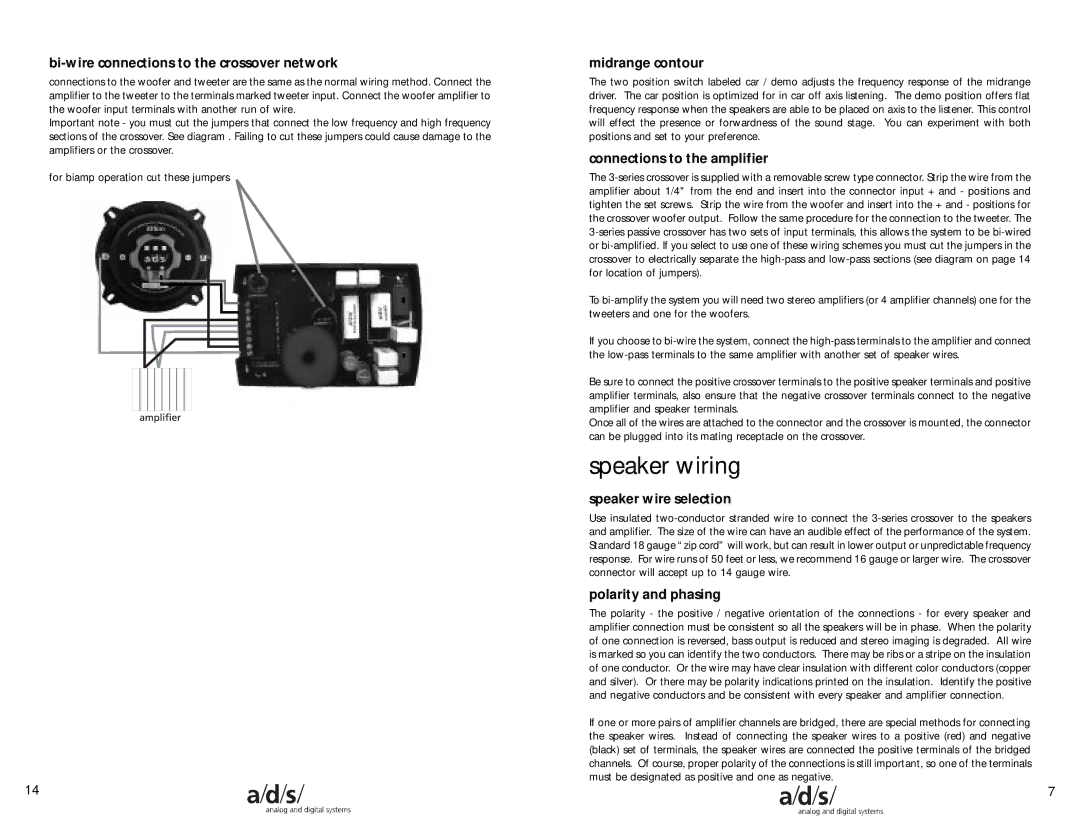336im, 334im, 335im specifications
The A/D/S series of amplifiers, specifically the models 335IM, 334IM, and 336IM, have made a significant mark in the world of audio technology, particularly in providing high-quality sound amplification for various applications. Each of these models integrates advanced features designed to enhance the listening experience, making them popular choices among audiophiles and professionals alike.The A/D/S 335IM amplifier is renowned for its impressive power output, delivering robust performance while maintaining excellent audio quality. It typically features a Class A/B design, allowing it to provide warmth and clarity in sound. The 335IM is equipped with several inputs and outputs, making it versatile for both home theater setups and professional audio environments. Its built-in protection circuitry ensures reliability and prevents damage from overloads or overheating, extending the amplifier's lifespan.
Moving to the A/D/S 334IM, this model is often celebrated for its compact design and lightweight construction, making it easier to integrate into various audio setups. Despite its smaller form factor, the 334IM does not compromise on sound fidelity, delivering crisp highs and deep lows that satisfy even the most discerning listeners. It employs advanced signal processing technologies, which help in minimizing distortion and enhancing overall sound clarity.
Meanwhile, the A/D/S 336IM amplifier stands out with its advanced digital signal processing capabilities. With features like customizable audio settings and built-in equalization, the 336IM allows users to tailor their audio experience to their specific preferences. This model usually supports multiple audio formats, making it an excellent choice for modern home theater systems that rely on digital audio sources. Its efficient power management system ensures that audio performance remains optimal while reducing power consumption.
In summary, the A/D/S 335IM, 334IM, and 336IM amplifiers each bring unique strengths to the table. While the 335IM excels in power and reliability, the 334IM offers compactness without sacrificing sound quality. The 336IM, with its advanced digital features, caters to tech-savvy users looking for customization. Together, they exemplify A/D/S's commitment to delivering high-performance audio technology. These amplifiers represent a blend of quality, innovation, and user-friendly design, making them valuable assets for any audio setup.

